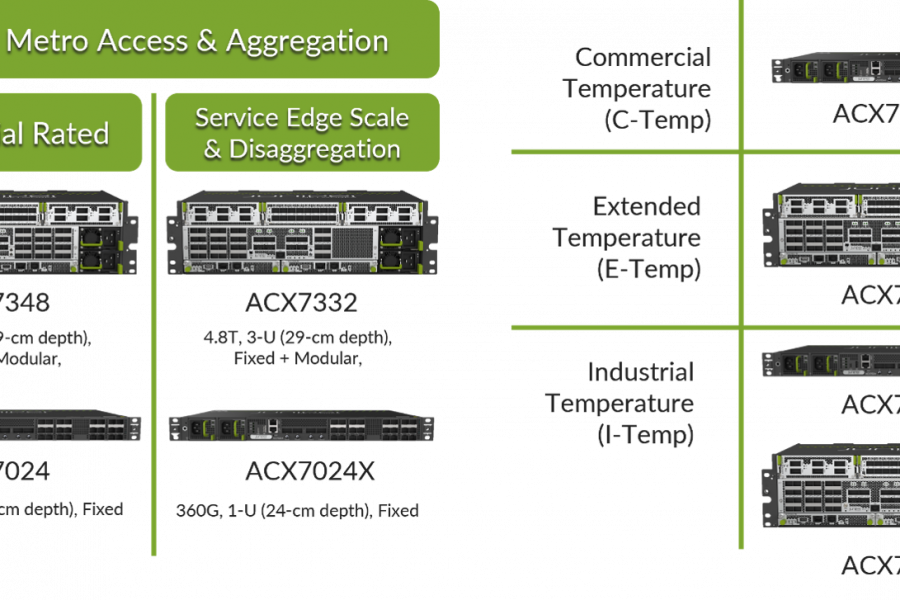This is the third in a series of seven blogs that focus on several areas of interoperability, including Segment Routing, EVPN, SDN Controllers, Network Automation and Timing & Synchronization. The interop test report is publicly available and can be found here. See part two here.
While Segment Routing (SR) deployments proliferate across many networks, recent IETF discussions have shifted to SRv6 and SRm6 (SRm6 is the IETF name for a set of IETF drafts originally referred to as SRv6+). In recent EANTC interop testing, Juniper demonstrated the interoperability of all variants of SR, to offer operators the freedom to choose any open standard SR technology that suits their deployment and business goals.
This blog demystifies why there are different variants of SR, such as SR-MPLS, SRv6 and SRm6, and helps network operators choose the right SR technology to drive their business transformation in the context of today’s network economics. We analyze SR technology choices from business agility and operational efficiency perspectives and provide a simple decision tree to help operators make the right choice.
Solving for Network Profitability in the Cloud Era
Let’s start with understanding how cloud application traffic traverses over different networks for today’s popular applications – from cloud providers to SPs who control last-mile access. For example, the simple act of checking your email on your smartphone or watching your favorite Netflix show on your home theater requires that traffic traverse multiple, independent networks. It is critical to note that these different networks are owned and operated by different companies (or different business units in a large provider), who need to manage their own business & financial outcomes. The days of walled-garden services like IPTV, where a single operator controlled the entire service ecosystem and the end user experience, are over.

In the cloud era, all independent networks that carry application traffic from the clouds to the end user, as depicted in the diagram above, must interwork together with minimal dependencies and clean handoffs. Additionally, each network operator must be able to maximize their own profitability by adopting technologies that simplify their network for operational efficiency and service agility.
One Network Provider’s Service is Another Provider’s Transport
In most cases, the way in which an end-to-end service is fulfilled includes one provider using another provider’s service as its own transport. In fact, it is the most economical way to improve service reach quickly. Metro carriers build ethernet networks for providing E-LINE/E-LAN services for residential broadband providers, business VPN providers, as well as mobile providers. When a mobile operator installs a new cell tower, it procures an E-LINE or an E-LAN service slice with specified service level agreements (SLAs) from a metro provider in the region via open market bidding. In this case, E-LINE and E-LAN are revenue services for the metro provider. For the mobile operator, they are simply transport services provided by the metro provider. Here, the primary business objective and differentiation of the metro network is to offer high capacity, guaranteed SLA transport slices for as many client networks as possible as quickly as possible. The metro network must be agnostic to the client application traffic. Tomorrow, if a new app goes viral in a client network, the metro provider simply needs to offer a network slice with the right SLA for the new application.
Network services abstractions, L3 VPN services, E-LINE/E-LAN for L2 services, and plain IP are quite mature in the industry. Now let’s look at which SR transport technology offers the fastest business benefits in each network domain.
The Right SR Choices for Business Agility
SR-MPLS is the right simplifying technology for a vast majority of customers – SPs, cloud and large enterprises – who have deep operational experience with MPLS in the WAN. SR-MPLS works seamlessly with all end user services such as IPVPNs and all types of L2VPN services. Juniper has already delivered complete SR-MPLS implementations on IPv4 as well as IPv6 infrastructure to cater to this market segment. Additionally, from early on, Juniper invested in the complete set of migration technologies that allow providers to migrate their existing LDP/RSVP based networks to SR networks. Many customers have already successfully rolled out Juniper SR-MPLS without service disruptions.
While SR-MPLS migration works seamlessly for MPLS networks, some operators are looking to eliminate MPLS and migrate to IP fabrics. SRv6 and SRm6 are IP fabric technologies that encode “segment” information on IPv6 packet using various extension headers. With these additional extension headers, SRv6 and SRm6 enable benefits such as traffic engineering and TI-LFA on IP fabrics.
Various IP fabrics are quite popular in data center networks, with VXLAN being the most popular. Juniper has delivered deployment hardened, cloud-grade IP fabrics on IPv4 as well as IPv6 infrastructure. Most IP fabrics are deployed on scale out network topologies, where granular traffic engineering or TI-LFA are not required. When an operator evaluates SRm6 or SRv6 for their deployment, they must look at complete IP fabric offerings and choose based on their requirements. In the final analysis, if an operator needs traffic engineering capabilities on IP fabrics, they must choose SRv6/SRm6. If they don’t need traffic engineering, they can happily adopt even simpler, deployment hardened IP fabrics such as VXLAN.
I want to upgrade my network to IPv6 Infrastructure. What are my SR technology choices?
With the emergence of IoT and 5G, adoption of IPv6 throughout the network – even at the network infrastructure layer – is becoming critical to provide network scale. Initially, some people incorrectly assumed that SRv6/SRm6 is required to run SR over IPv6 or dual stack infrastructure. SR-MPLS and all IP fabrics run over IPv6 infrastructure today.
Choose the Right SR Technology with a Simple Decision Tree
Juniper believes in giving customers the freedom to choose the right technology to achieve their unique business goals. In the recently concluded MPLS+SDN+NFV World Congress multi-vendor interoperability testing conducted at EANTC in Berlin, Juniper demonstrated its commitment for multi-vendor interoperability of a broad range of SR technologies.
Now that many SR technology choices are available, the decision criteria boils down to choosing technology that maximizes business agility and operational efficiency. Following this decision tree helps in making the right technology choice.

Juniper Technology Fuels the ‘Cloud + 5G + AI’ Era Transformation
We are providing a new generation of networking solutions to help our customers succeed in the ‘Cloud + 5G + AI’ era that include all flavors of open standards SR. Juniper demonstrated interop with Cisco, Huawei, Arrcus and Keysight IXIA as shown below.
- Multi-vendor, interoperable SR-MPLS, SRv6, SRm6 implementation on MX and cRPD
- Multi-vendor, interoperable implementation of SR-MPLS with IPv6 control plane

In the next blog in this series, we will address SDN WAN Controller interoperability.
Join us on June 10 (US/EMEA) and June 11 (APAC) to discover how network architectural shifts create business value at our Juniper Virtual Summit for Cloud & Service Providers. Register here.


